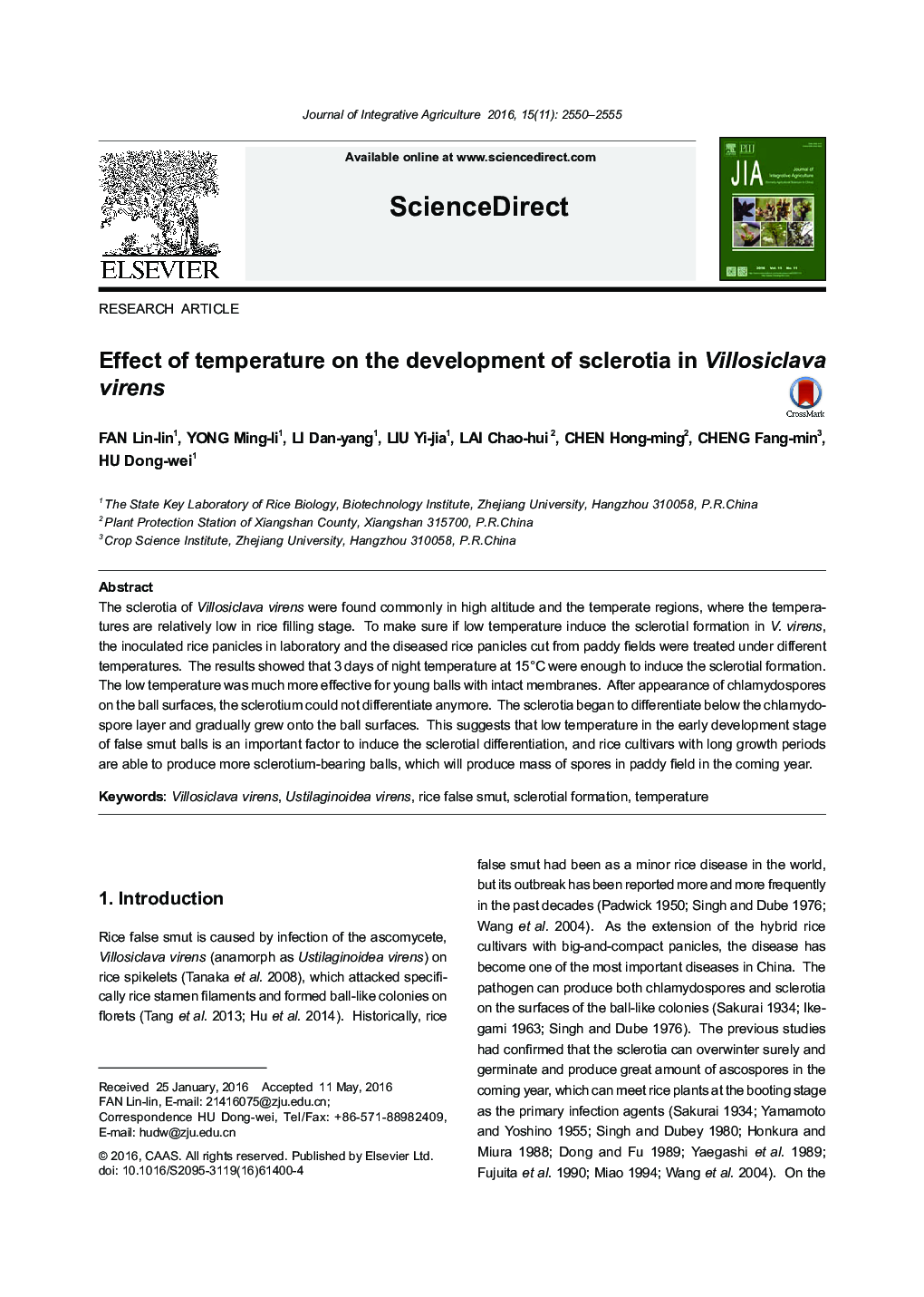| Article ID | Journal | Published Year | Pages | File Type |
|---|---|---|---|---|
| 8876212 | Journal of Integrative Agriculture | 2016 | 6 Pages |
Abstract
The sclerotia of Villosiclava virens were found commonly in high altitude and the temperate regions, where the temperatures are relatively low in rice filling stage. To make sure if low temperature induce the sclerotial formation in V. virens, the inoculated rice panicles in laboratory and the diseased rice panicles cut from paddy fields were treated under different temperatures. The results showed that 3 days of night temperature at 15°C were enough to induce the sclerotial formation. The low temperature was much more effective for young balls with intact membranes. After appearance of chlamydospores on the ball surfaces, the sclerotium could not differentiate anymore. The sclerotia began to differentiate below the chlamydo-spore layer and gradually grew onto the ball surfaces. This suggests that low temperature in the early development stage of false smut balls is an important factor to induce the sclerotial differentiation, and rice cultivars with long growth periods are able to produce more sclerotium-bearing balls, which will produce mass of spores in paddy field in the coming year.
Related Topics
Life Sciences
Agricultural and Biological Sciences
Agricultural and Biological Sciences (General)
Authors
Lin-lin FAN, Ming-li YONG, Dan-yang LI, Yi-jia LIU, Chao-hui LAI, Hong-ming CHEN, Fang-min CHENG, Dong-wei HU,
